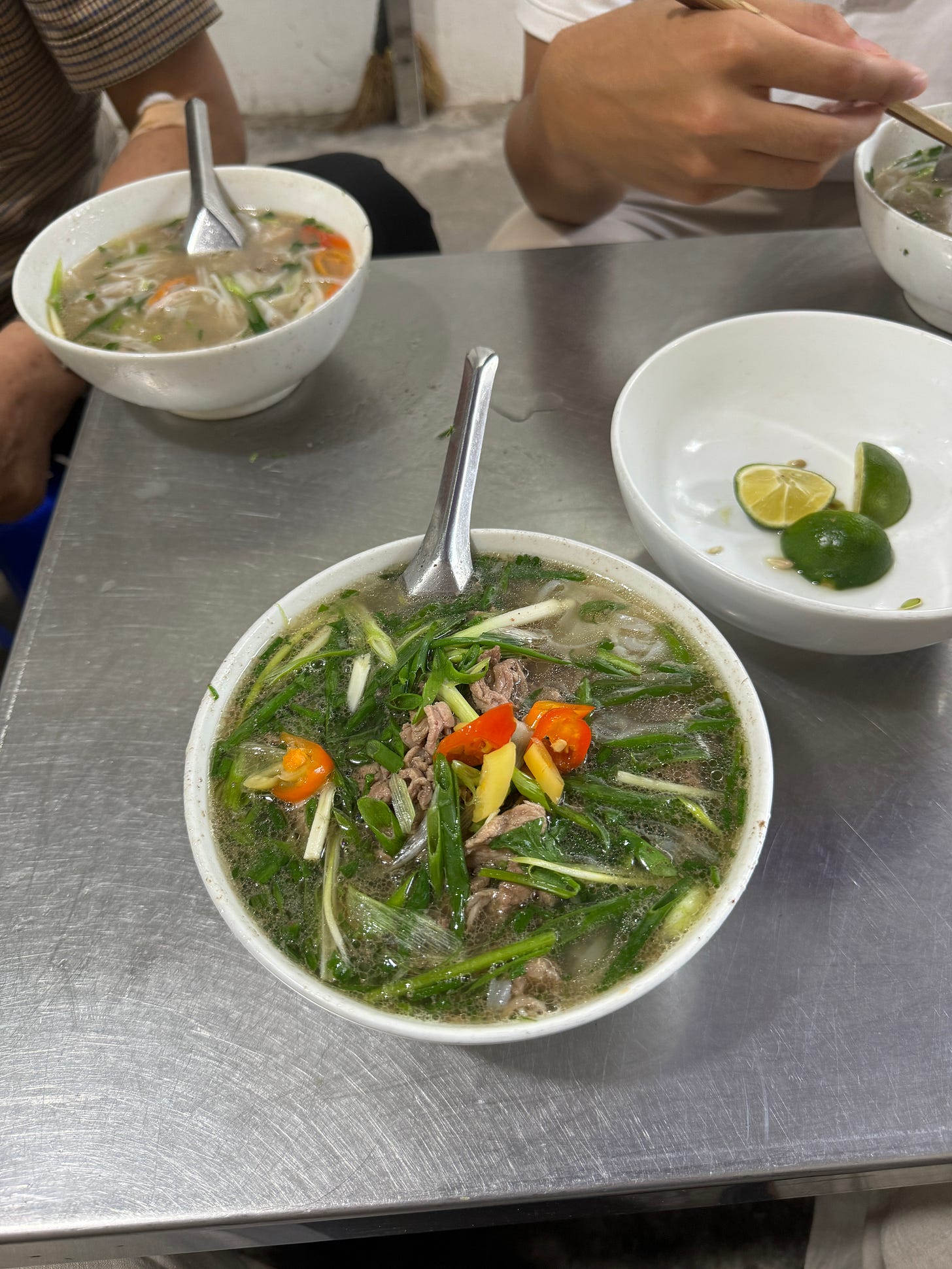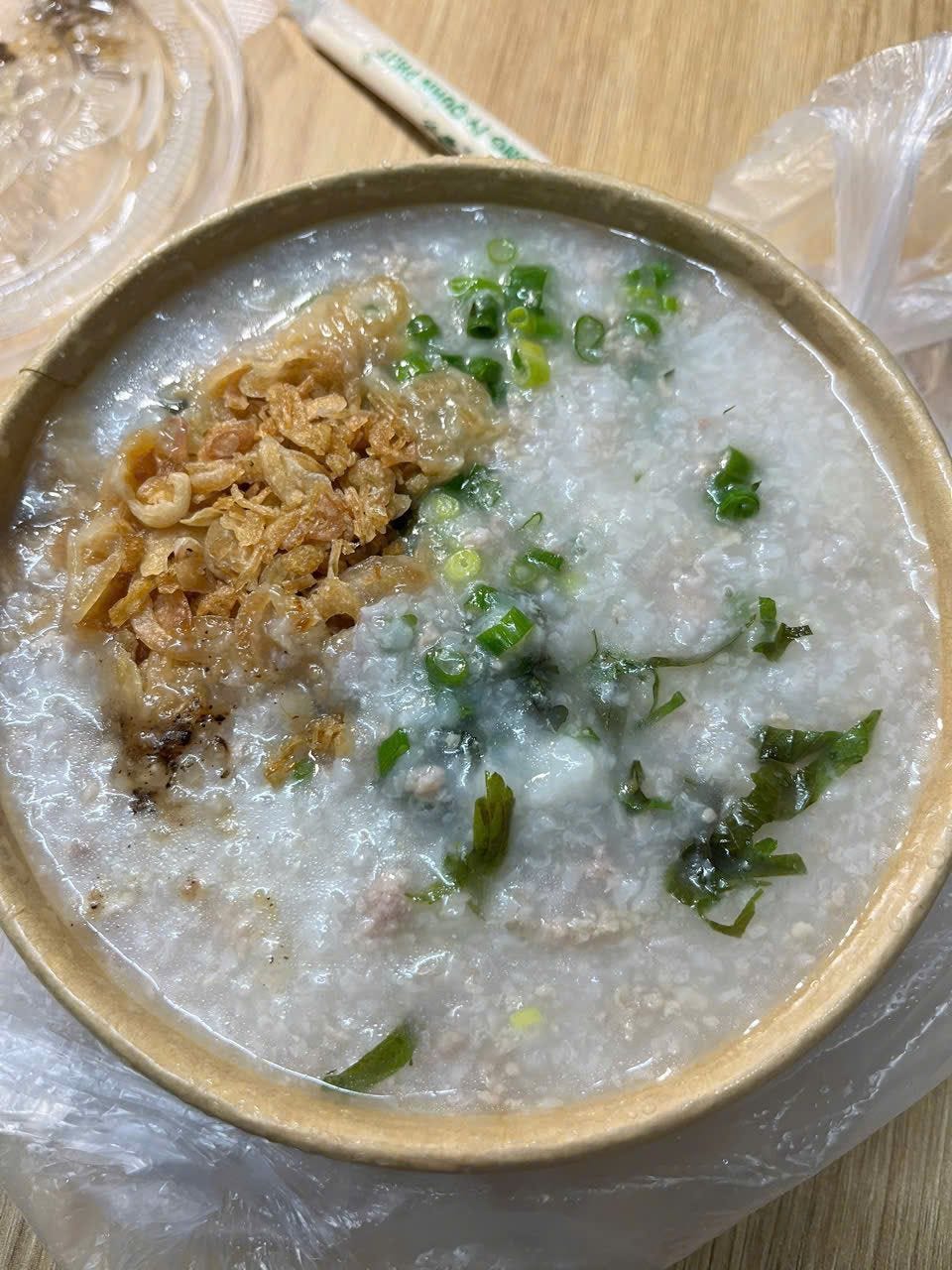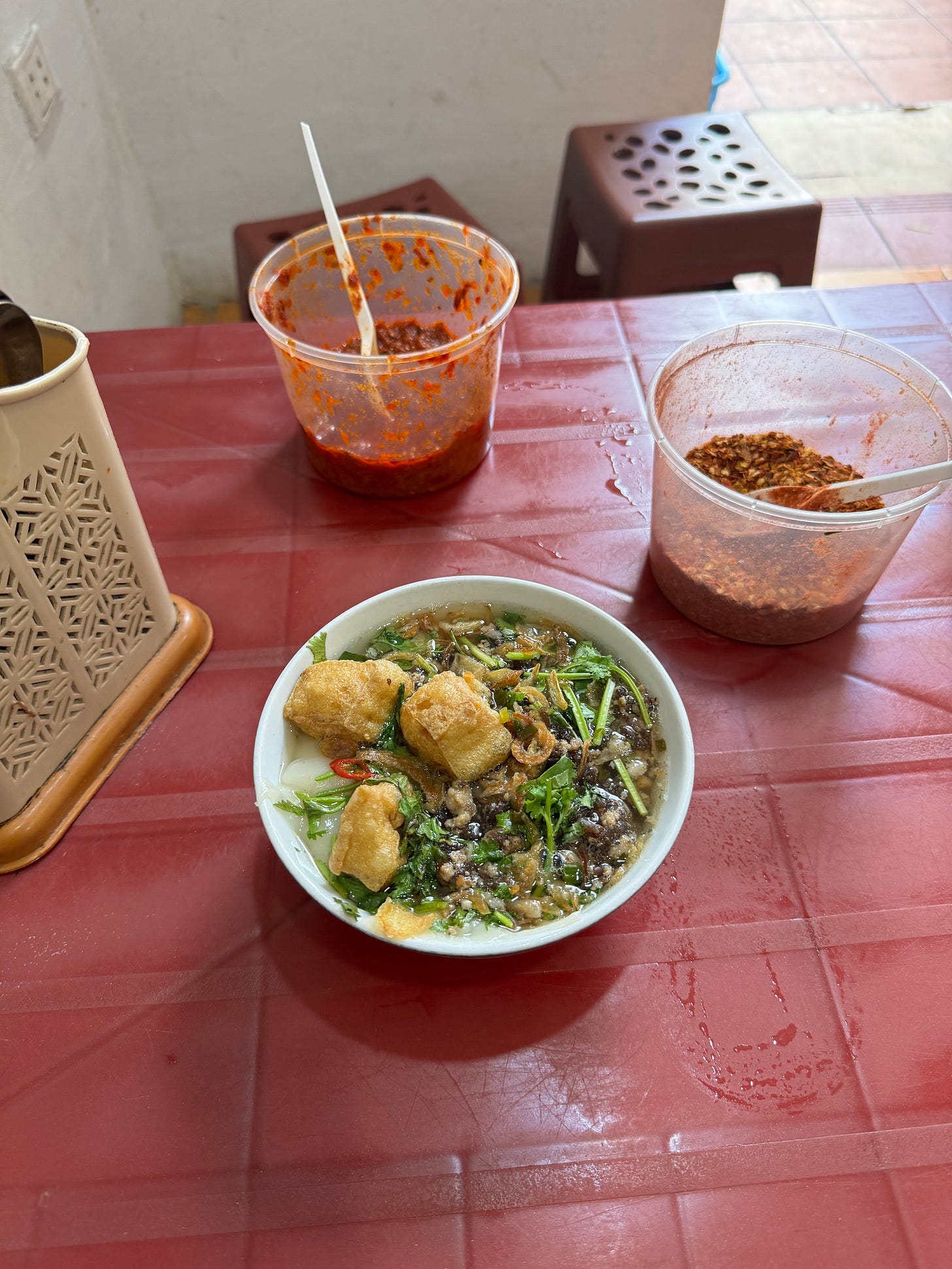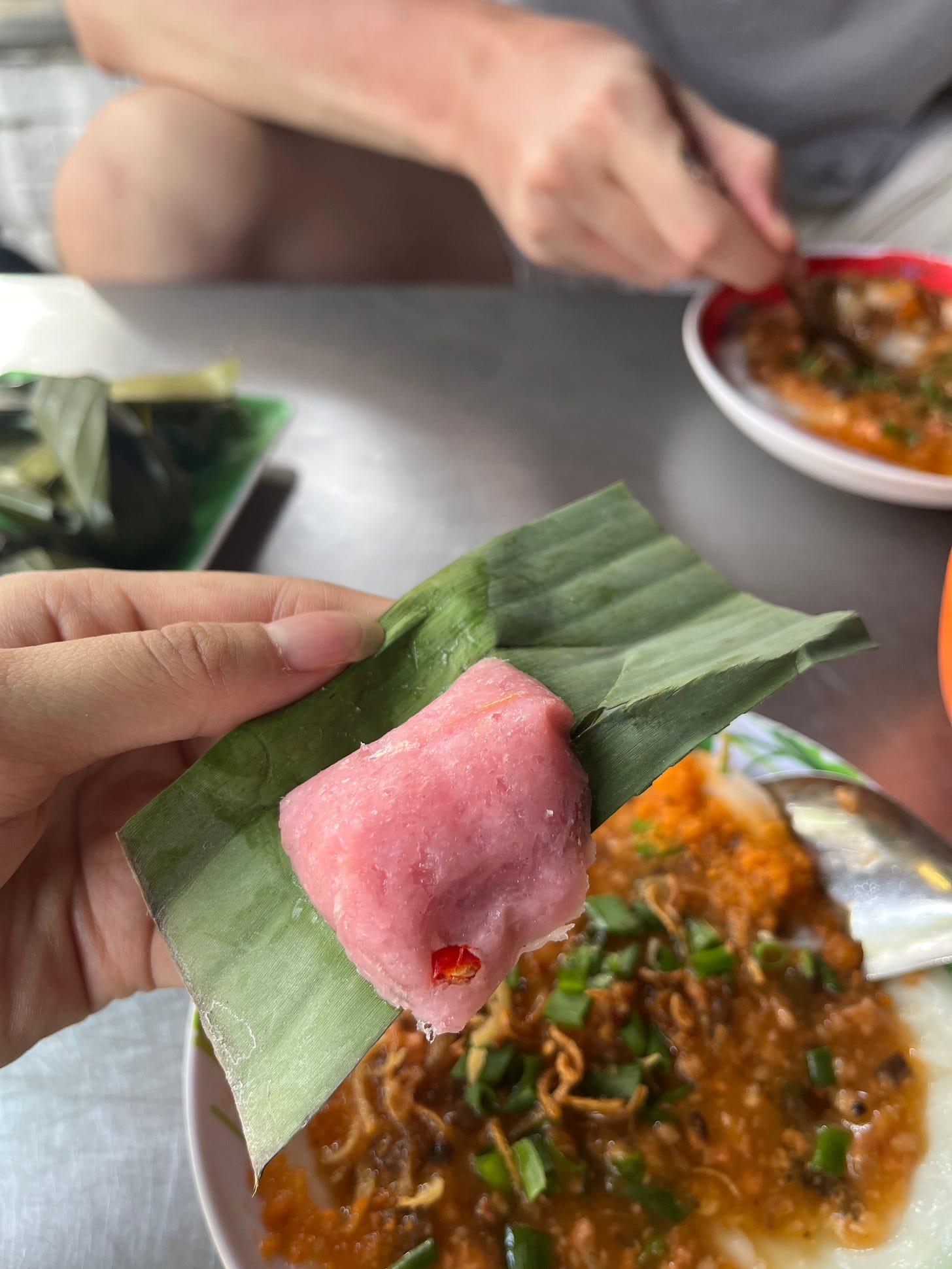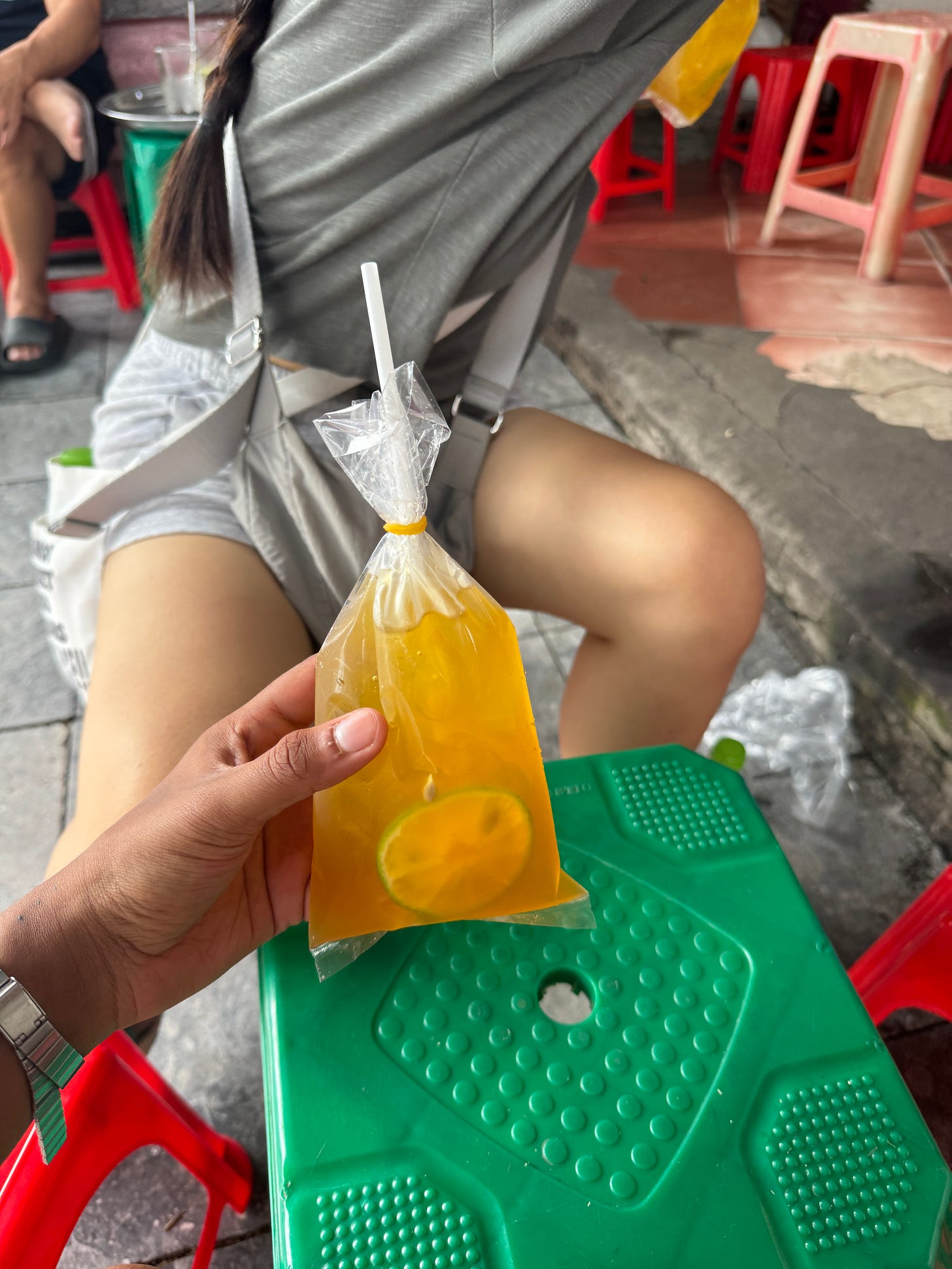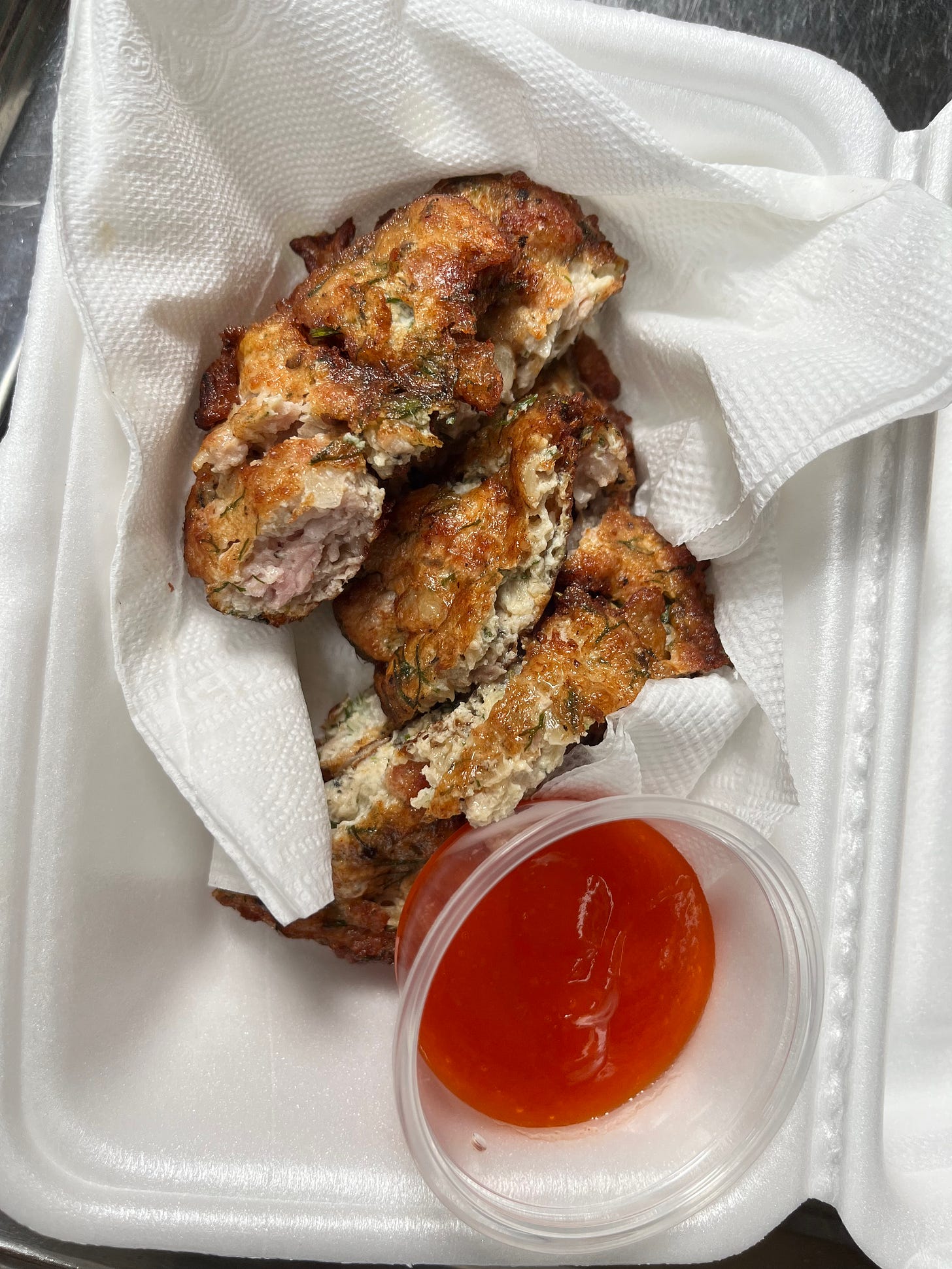What to Eat in Hanoi (That Isn’t Just Bánh Mì and Phở)
Your guide to the underrated dishes, local spots, and street food rituals worth traveling for.
From uncles smoking a cigarette in one hand and grilling pork patties for bun cha with the other or Aunties beating their fresh fish pulled to order for cha ca la vong, Hanoi, Vietnam is anything if not a a heaven for food lovers.
In this guide, I breakdown 21 of my favorite and most notable foods from the city: a little bit of history, cultural & social impact, the food itself and of course, where to get it.
I hope you learn something new and find something specifically for you to eat!
What to Eat
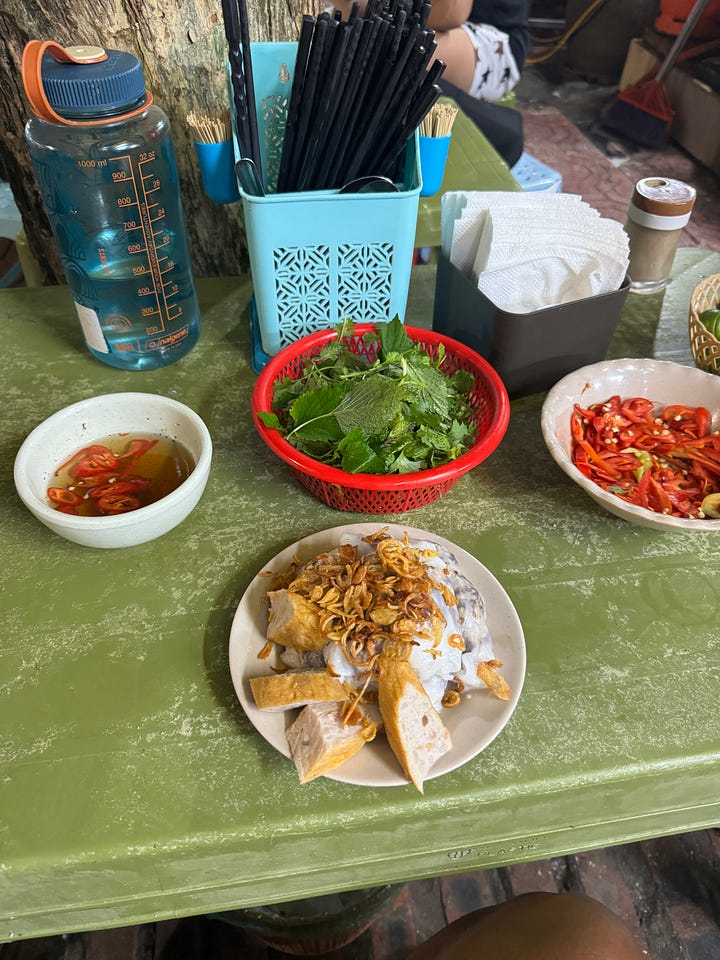
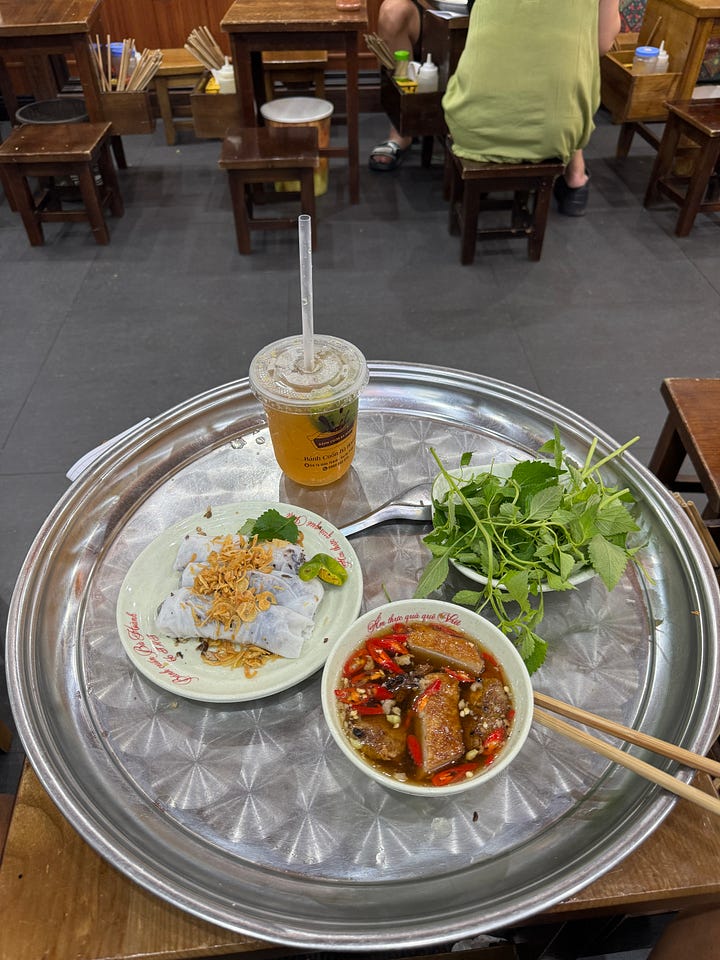
1. Bánh Cuốn
Bánh Cuốn, meaning "rolled cake" in Vietnamese (bánh refers to anything cake- or bread-like (sweet or savory) and cuốn means to roll), is one of the most quintessential dishes of Hanoi. These delicate, steamed rice crepes are typically filled with ground pork, wood ear mushrooms, and sometimes water chestnuts, seasoned with fish sauce and black pepper.
They're often served warm with a soft-cooked egg (trứng) and cinnamon-scented sausage (chả quế). Accompaniments include nước chấm (a dipping sauce made of fish sauce, sugar and water), chili, calamansi (a type of kumquat native to the Philipines) and a basket of fresh herbs and vegetables such as perilla, Thai basil & mint.
There are two common styles in Hanoi: the more modern version with meat fillings, and the Thanh Trì style—served cold and unfilled, often with fried shallots. Think of bánh cuốn to Vietnam as crêpes are to France, pan polay to India, or anjero to Somalia— a simple dish rooted in technique acting as a vessel for other flavors
Where to Eat it
Bánh Cuốn Bà Hoành for Thanh Trì style
Bánh cuốn Bà Xuân for the modern style

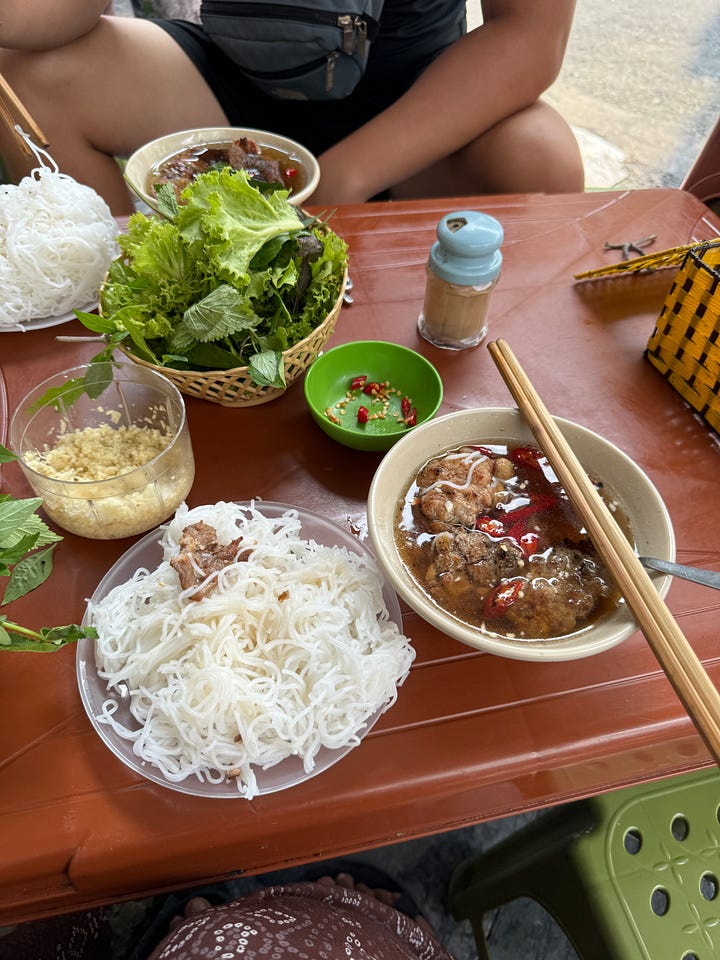
2. Bún Chả
Bún Chả is a beloved Hanoi specialty made with thin, round rice noodles (bún) and grilled pork patties (chả), served in a light, fish sauce-based broth. The dish comes with pickled green papaya, daikon, fresh herbs, lettuce, mustard greens, and often crispy spring rolls on the side (chả giò). Diners typically customize the dipping broth with chili, garlic, and calamansi juice.
Originating in Hanoi’s Old Quarter in the early 20th century, bún chả is traditionally eaten at lunchtime—usually between 12 and 3 p.m.—when many locals break from work or nap. It rose to international fame after President Obama and Anthony Bourdain famously shared a meal of it in 2016.
Unlike bún thịt nướng, which combines grilled meat, noodles, and sauce in one bowl (a dish famous in Saigon), bún chả separates the grilled pork into its own light, broth-like dipping sauce.
Northern Vietnam also experiences four different seasons, one of them being a very cold winter which is not conducive to growing chilies or spices – something you won’t generally find in their food. It was also the capital of Vietnam during the French colonization so the cuisine is more traditional – lighter and simpler, than the south which tends to involve more sugar, spices and overall diversity in their food due to exposure to Western culture.
Where to Eat it
Phố Mã Mây, you’ll even see a rotation—phở in the morning, bún chả for lunch.

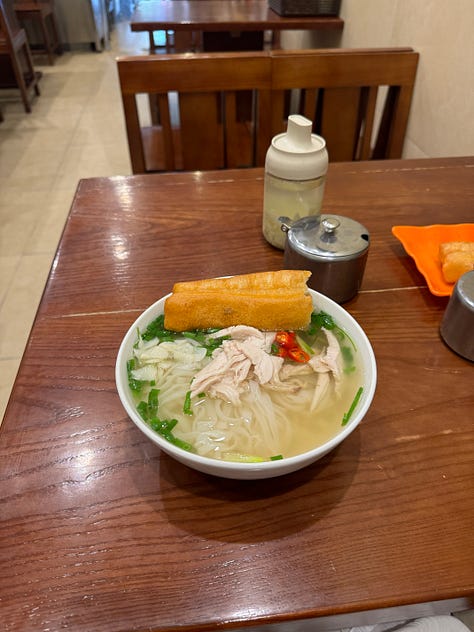

3. Phở Gà
Phở Gà, or chicken pho, is a Hanoi staple known for its lighter broth and affordability compared to beef pho. It typically includes white or dark meat chicken, with some versions offering bone-in cuts and a side of nước mắm gừng (ginger fish sauce) for dipping.
At the table, you’ll usually find pickled garlic, fresh lime wedges, sliced bird’s eye chilies, and fermented chili sauce – different from the toppings you’d find in southern Vietnam which includes sugar & hoisin sauce (similar to what you’d find in pho restaurants outside Vietnam due to the mass immigration of Southern Vietnamese after the fall of Saigon).
Many shops use free-range “gym chickens,” which are leaner and chewier, while factory-raised chickens offer softer, meatier bites. Optional add-ons include poached eggs (chicken ovaries) and quẩy (fried dough sticks) to soak up the broth.
Another variation, phở gà trộn, is a dry variation with chicken, herbs, peanuts, crispy shallots, and a soy-vinegar sauce, served with a side of broth and sometimes a poached egg. Vietnamese diners usually prefer dark meat, and this dish is more commonly eaten at dinner.
Where to Eat it
4. Phở
Phở is Vietnam’s most iconic dish—built around bánh phở, flat, rectangular rice noodles made by steaming rice sheets and cutting them into strands (unlike extruded round rice noodles — bún). In Vietnamese meals, the main starch—rice or noodles—is paired with proteins, vegetables, and often a small side soup (canh). In phở, the soup itself becomes the centerpiece: noodles, meat, herbs, and vegetables all come together in one bowl.
The broth is typically simmered for hours using beef bones, charred ginger and onions, star anise, cinnamon, cloves, cardamom, and coriander. It’s traditionally eaten for breakfast, though now enjoyed all day. The best shops often specialize in just one style—phở bò (beef) or phở gà (chicken).
Phở Xào – Stir-fried phở noodles with beef, onions, greens, and a crispy-chewy texture. Cooked with wok hei using two woks—one for charring noodles with seasoning, the other for beef and vegetables in oyster sauce. Typically served with herbs (mint, perilla), chili, lime, fish sauce, and pickled vegetables.
Phở Thìn is a famous Hanoi shop using a unique method of wok-frying beef with garlic before adding it to the bowl, creating a rich, aromatic flavor with a heap of green onions on top.
Where to Eat it
Phở Bò Lâm for classic beef pho
Phở Xào Ba Thanh Béo for Phở Xào
Phở Thìn for Wok fried garlic beef pho
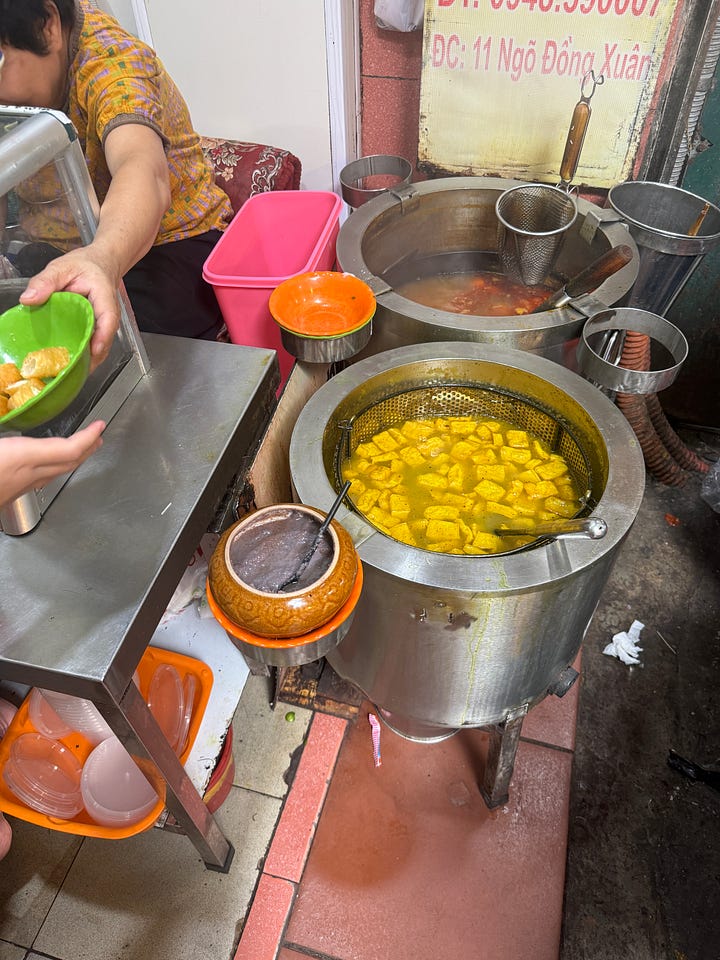
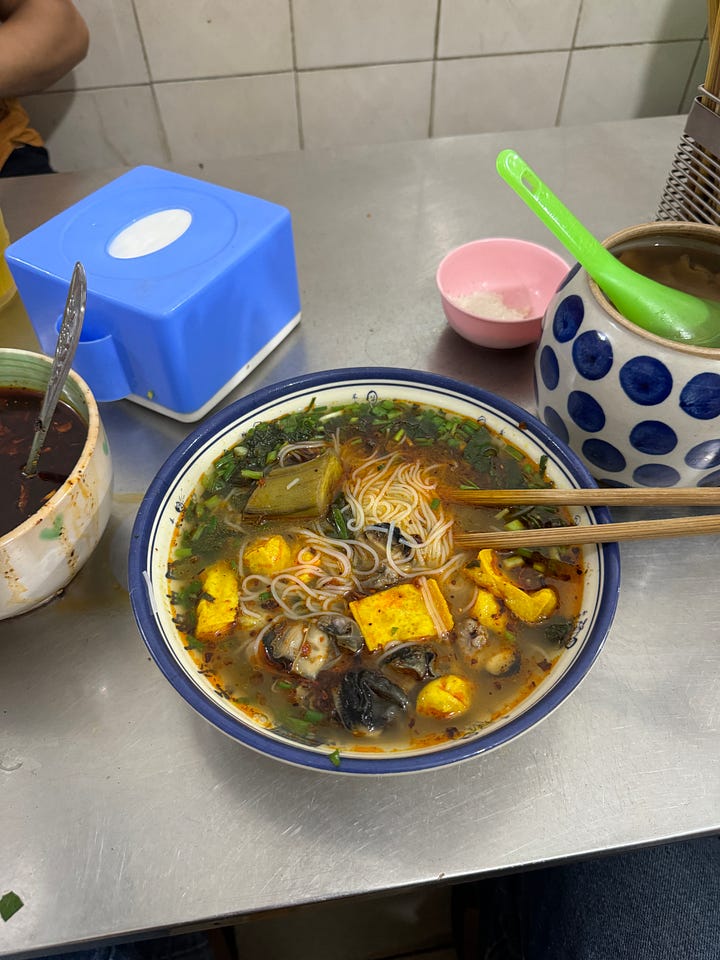
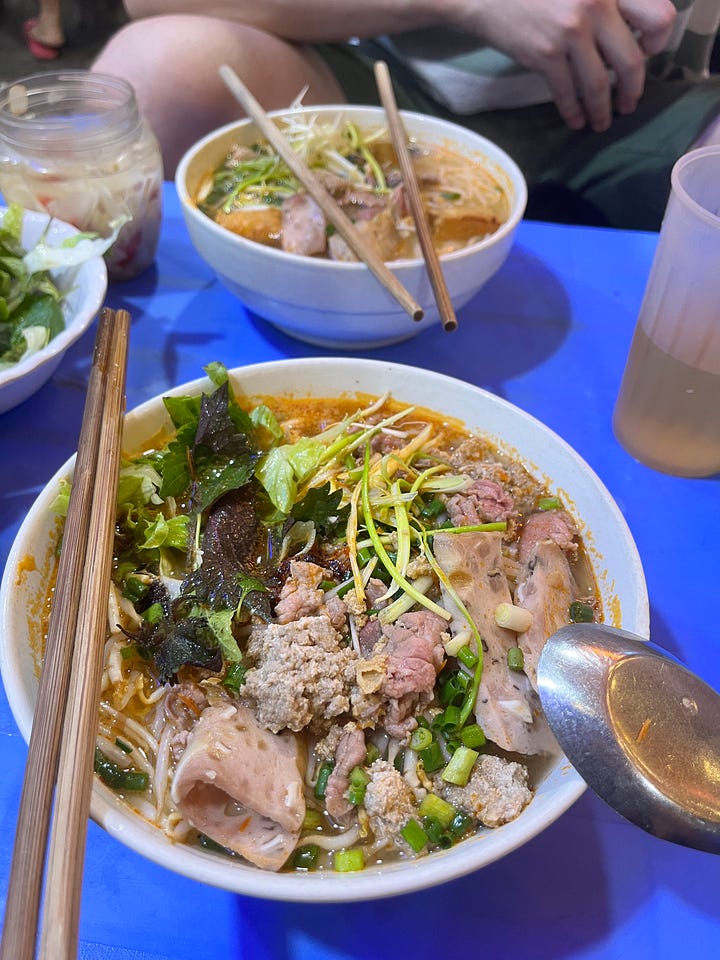
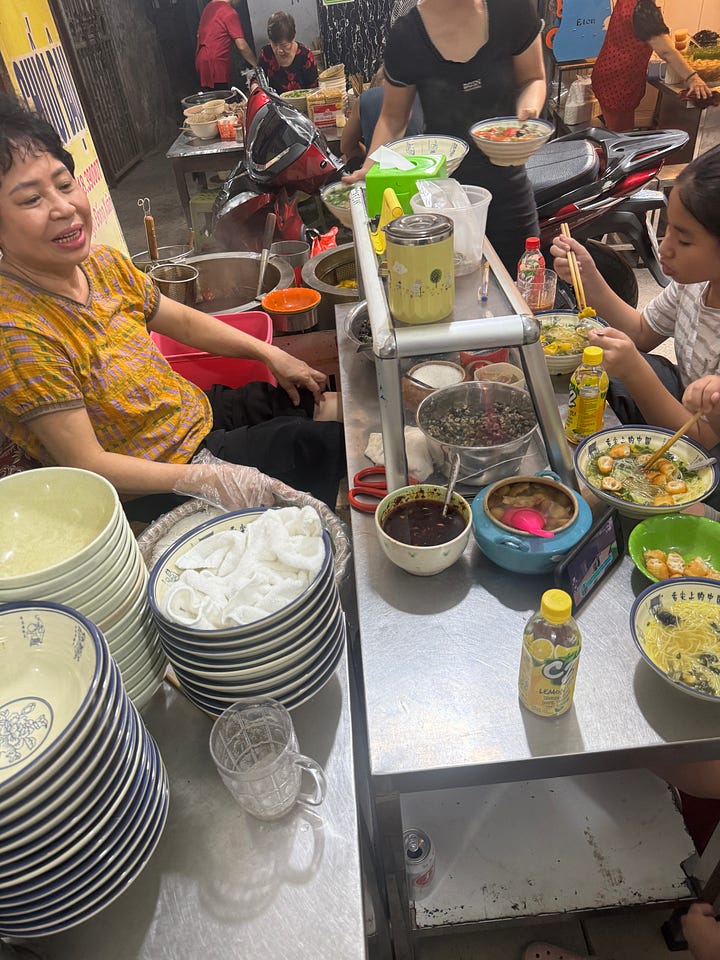
5. + 6. Bún Riêu & Bún Ốc
Bún Riêu is a tangy, umami-rich Vietnamese crab noodle soup with roots in the Red River Delta, Đồng Bằng Sông Hồng of Northern Vietnam. Traditionally eaten for breakfast, it’s believed to have developed during the French colonial period, when Vietnamese cooks adapted tomato-based French bouillabaisse into a lighter, localized dish. The broth is made by simmering pork or rib bones with tomatoes, and flavored with a distinctive crab paste (riêu) made from freshwater paddy crabs. These crabs are tiny, but deeply aromatic, giving the soup its signature flavor and a slightly spongy texture in the floating crab mixture.
The Northern version typically includes crab paste, tomatoes, fried tofu, cubed pork fat, and shrimp paste. In Central Vietnam, chả lụa (pork sausage) is often added, while Southern versions, especially from the Mekong Delta, get more elaborate with ingredients like blood pudding, pork ribs, pig’s feet, dried shrimp, squid, snails, and tamarind for extra tang.
Bún riêu is often compared to bún ốc (snail noodle soup), with the main difference being crab instead of snail—though snails are sometimes added to bún riêu as well. Compared to bún riêu, bún ốc is milder and simpler in ingredients. A similar dish called luosifen (snail noodles) is popular in Guangxi, China.
Toppings for both can include meatballs, fried tofu (đậu), banana (chuối), chả lụa, blood pudding, bean sprouts, banana flower, fertilized duck egg and morning glory. Common condiments include shrimp paste, chili sauce, and fresh lime.
Where to Eat it
Bún Riêu Sườn Sụn Trang for classic bún riêu
Bún Ốc Thanh Hải for the snail-crab combination
Bún Ốc Thúy for bún ốc
7. Cháo
Cháo is Vietnamese rice porridge, a simple, comforting dish often eaten for breakfast or when someone is feeling unwell. Made by simmering rice until it breaks down into a thick, soupy texture, it’s typically served with toppings like ground or shredded pork, quẩy (fried dough sticks), and pork floss. Known for its soft texture and mild flavor, cháo is considered the essence of home-cooked comfort in Vietnam. It’s part of a larger family of rice porridges across Asia, similar to Indian kanji, Chinese congee, or Cantonese jook.
Depending on where you eat it, you may either find that the texture is more grainy or entirely smooth depending if it’s made with whole rice grains or rice flour.
Where to Eat it
8. Bánh Đúc
Bánh đúc is a sticky rice porridge made from glutinous sticky rice and stickier in texture compared to cháo (rice porridge). It is typically seasoned with fish sauce, pork, and black pepper, and topped with fresh herbs and chili for added flavor and freshness.
If you’re a fan of anything QQ texture, it is akin to eating a bowl of mochi.
Where to Eat it
9. + 10. Bánh Giầy & Bánh Giò
Bánh Giầy is a chewy Vietnamese snack made from glutinous rice, similar in texture to mochi, often enjoyed alongside chả lụa (pork sausage). It’s loved for its dense, sticky chewiness and is related to other traditional snacks like bánh chưng (sticky rice with mung bean and pork) and bánh giò. Served with either a spicy or sweet chili sauce, bánh giầy is the ultimate snack for qq lovers.
Bánh Giò is a traditional Vietnamese pyramid-shaped dumpling made from rice flour, filled with ground pork, mushroom, and shallots. The texture of the exterior is softer than bánh giầy – jelly like and disintegrates with the touch of your tongue.
Wrapped in banana leaves, it takes on a pale green hue and a subtle grassy, tea-like aroma. Its name comes from “giò,” a mortadella-like pork sausage, as leftover pork scraps and banana leaves from giò production were repurposed to create these dumplings. Skilled preparation is required, so bánh giò is typically found at specialized vendors rather than mainstream restaurants. Common toppings include quick-pickled cucumbers, pork or beef sausage, hot sauce, soy sauce, and pepper.
Where to Eat it
11. Bún Đậu Mắm Tôm
Bún Đậu Mắm Tôm is a traditional Vietnamese dish featuring vermicelli noodles served with fried tofu and the pungent fermented shrimp paste called mắm tôm, which is considered the soul of the dish. Its exact origin is unknown but it’s a staple rural lunch meal. Early versions were simple—fried tofu, vermicelli, and herbs with a cup of shrimp paste. Today, it includes a variety of toppings like boiled pork, pig tripe, and nem rán (fried spring rolls), all arranged on a flat bamboo tray in a circle. Common herbs and vegetables include fish mint, perilla leaf, basil, oregano, and cucumber. The noodles often include bún lá—firm rice noodles cut into chunks.
Mắm tôm is strong and pungent, sometimes tempered with sugar, calamansi juice, and chili whisked until bubbly; for those who find it too intense, fish sauce (nước mắm) can be used instead. Traditionally, mắm tôm is avoided on the 1st and 15th lunar calendar days by superstitious people and business owners due to bad luck beliefs. After eating bún đậu, gum is often offered to help neutralize the strong odor.
Meat accompaniments include fried or boiled pork sausage (dồi rán), boiled pig trotter, fried and boiled pig intestines, blood sausage, and boiled pig tongue.
Where to Eat it


12. Xôi Xéo
Xôi Xéo is a Northern Vietnamese breakfast dish made with sticky rice, steamed mung bean paste, fried shallots, and scallion oil. The name “xéo” refers to the slicing of the mung bean paste over the rice. It's commonly served with add-ons like braised pork, pork rolls, pork floss, or chicken stir-fried with mushrooms. The base dish is vegetarian, but most street vendors offer meat options. It’s packed in banana leaf or paper and eaten on the go.
A sweet version also exists, where the sticky rice (and optionally mung bean paste) are topped with sugar and a splash of coconut milk instead of savory toppings. This variation is often eaten as a snack or light dessert. Both sweet and savory versions use the same core ingredients but differ in how they're dressed.
Where to Eat it
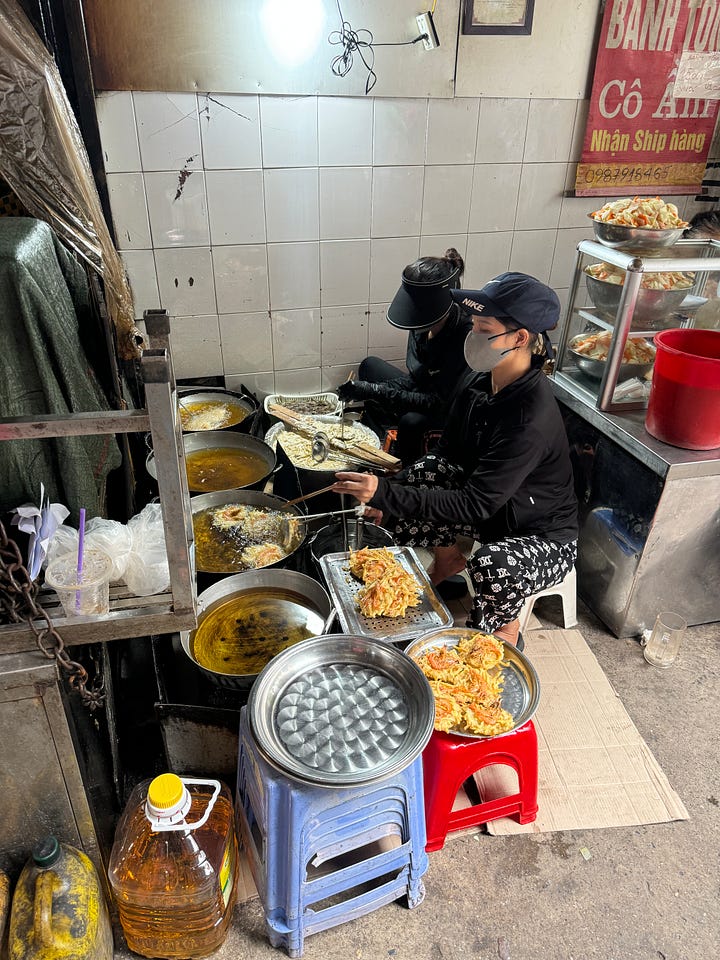
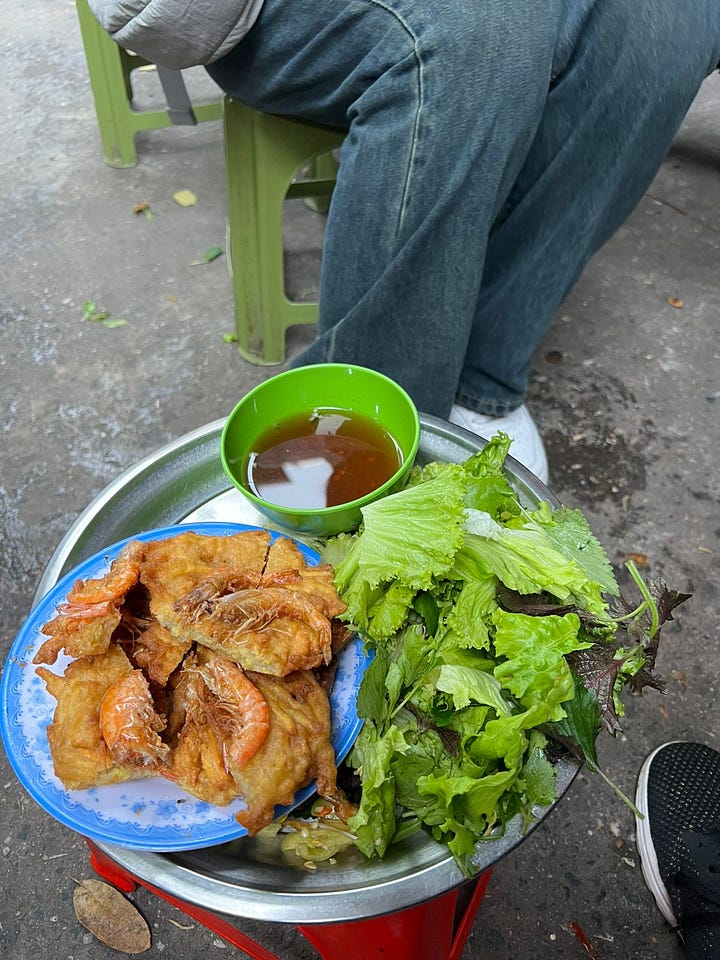
13. Bánh Tôm
Bánh Tôm is a crispy Vietnamese shrimp cake made from a batter of wheat flour (sometimes corn and / or rice starch are added for extra crispness) mixed with shredded sweet potatoes and whole fresh shrimp. The mixture is deep-fried until golden and crunchy, creating a delightful contrast between the crispy exterior and tender shrimp inside. Typically served with a side of fresh herbs, lettuce, and a tangy dipping sauce (nước chấm). It is similar to Korean pajeon and Indian pakora.
Where to Eat it
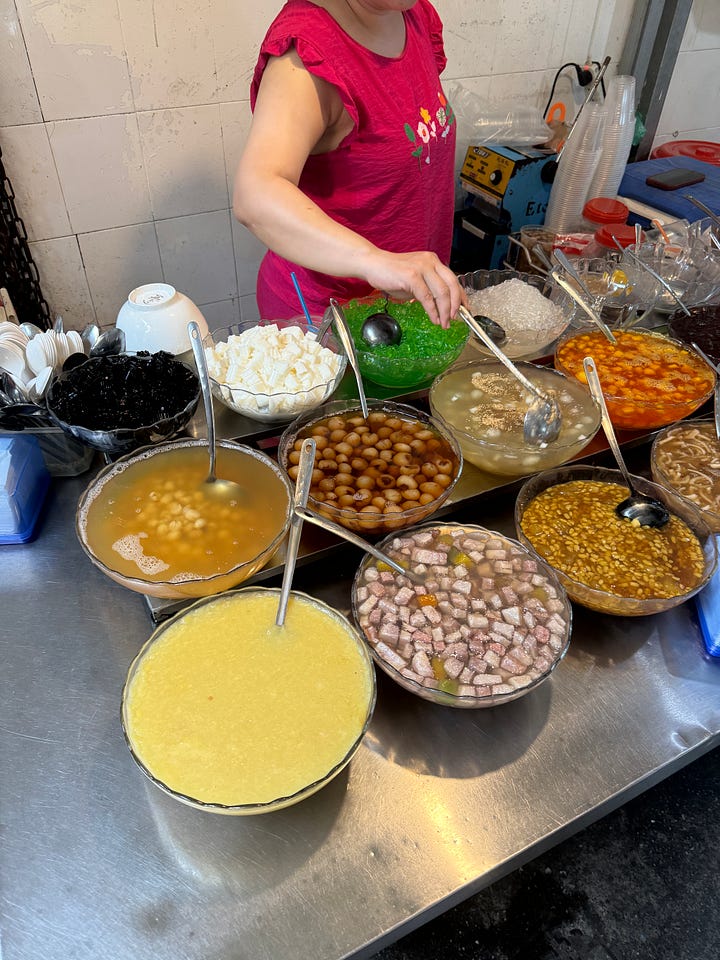
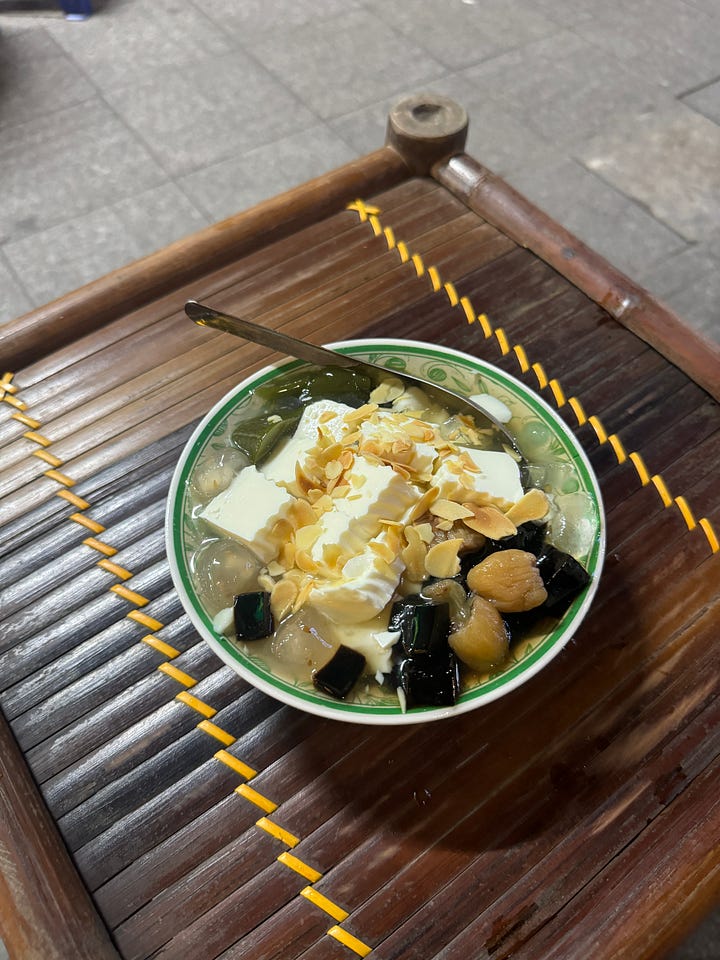
14. + 15. Chè & Thạch Găng
Chè is a Vietnamese sweet dessert soup or pudding made from ingredients like beans, glutinous rice, tapioca, coconut milk, jellies, and fruit. It can be served hot or cold and comes in many varieties, such as mung bean chè (chè đậu xanh), three-color chè (chè ba màu), and banana tapioca chè (chè chuối). Chè is commonly sold by street vendors and enjoyed as a snack or dessert throughout Vietnam.
Thạch Găng is a Vietnamese jelly dessert made from the leaves of the Găng plant, which give it a dark green to black color and a slightly herbal, bitter taste. The jelly is usually cut into cubes or strips and served chilled, often with sweetened coconut milk and crushed ice. It’s valued for its cooling properties and unique flavor. Thạch Găng is popular in southern Vietnam and often eaten as a refreshing treat, especially in hot weather.
Chè is to Vietnam as falooda is to India, Cendol is to Malaysia and Ice Jelly is to China – a refreshing, cooling dessert with multiple textures and flavors.
Where to Eat it
16. Nem Chua
Nem Chua is a sour fermented minced pork snack, originally developed to make raw meat safe for consumption through fermentation. The meat is seasoned, wrapped, and left to ferment, developing a tangy, slightly spicy flavor.
You’ll often see a variation known as nem chua rán, a fried minced pork snack that does not go through a fermentation process. It’s commonly eaten as a snack or appetizer and is popular during the holidays or special events.
Where to Eat it
17. Trà Đá
Trà Đá is Vietnamese iced tea, typically made from brewed green tea served cold over ice. It’s a ubiquitous, refreshing drink commonly offered for free or very cheaply at street food stalls, cafes, and restaurants across Vietnam. Trà đá is a staple for cooling down in the heat and often accompanies meals or casual gatherings.
You’ll find trà đá sold genuinely, everywhere. Some classic orders are lemon (trà chanh), sweetened (trà ngọt) and calamansi (trà cây quất).
18. “Chicken Feet Street,”
Ly Van Phuc Street in Hanoi, known as “Chicken Feet Street,” is a lively culinary hotspot famous for its grilled chicken feet and other barbecued meats. About 200 meters long and close to Hoàn Kiếm Lake, the street comes alive each evening from 4:30 PM to midnight. Vendors grill chicken feet, wings, and sausages over open flames, filling the air with smoky, mouth-watering aromas. The chicken feet, prized for their unique texture, are tender and chewy beneath crispy, smoky skin. They’re served with spicy dipping sauces and balanced by pickled cucumbers and morning glory to cut through the richness.
Where to Eat it
Gà Nướng Thịnh Vượng (and every shop along the same street)
19. Worm Cakes
Worm Cakes are a traditional snack found in some regions of Vietnam, made from ragworm (rươi), a marine annelid that lives in brackish water. It's a highly prized, seasonal delicacy in Northern Vietnam, particularly in Hanoi and some coastal provinces. It's harvested only for a short period, typically in late autumn (October-November)
These cakes are typically pan-fried or grilled, offering a crispy exterior with a savory, earthy flavor inside. They are considered a specialty and reflect the use of unique local ingredients in Vietnamese cuisine. Worm cakes are often enjoyed as a street food snack, showcasing the country’s diverse food culture.
Where to Eat it
20. Đồng Xuân Market
Đồng Xuân Market is Hanoi’s largest indoor market, located in the Old Quarter. Built in 1889 with French colonial architecture, it serves as a major trade hub. After a fire in 1994, the market was rebuilt in its original style. Today, it covers about 14,000 square meters over three floors with around 2,000 stalls selling clothing, electronics, fresh produce, and more. It’s a lively spot offering an authentic glimpse into Hanoi’s daily life and commerce, popular with both locals and tourists.
Where to Find it
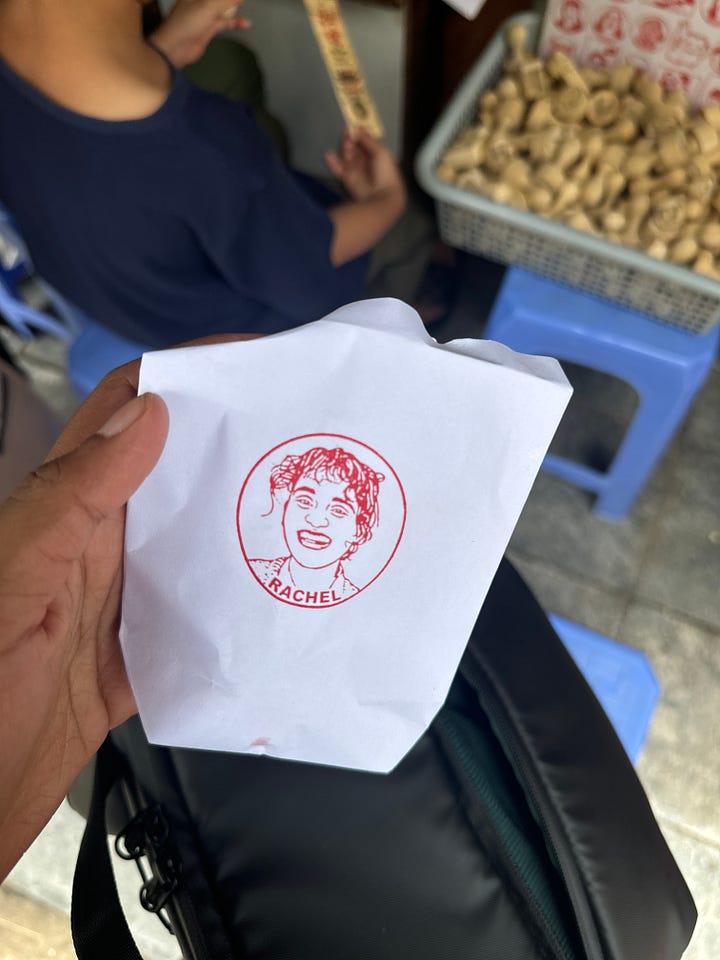

Honorable Mentions
Some stores and local shops that I loved!
I would love to hear of the foods you loved in Hanoi that I missed on this list! Leave a note in the comments.
This piece was written by
, researched by with the help of .Rachel and Ava are sisters and lifelong foodies based SF Bay Area and Los Angeles, respectively. If you ever see the two of them cook together, pigs are probably flying.
Rachel met Ovia on her first day in Vietnam in August 2024 where Ovia was her tour guide through Curious About Vietnam – it’s safe to say they became fast friends.
Funny Table is an independent food publication and video channel dedicated to teaching you more about what you eat. We’re a small volunteer team committed to telling stories that reflect the diverse voices, cultures, and communities that shape what’s on our plates. Every share, comment, like, and subscription helps us keep going.
Enjoy educational media and stories about food? Check out our videos on YouTube and Instagram for more.







